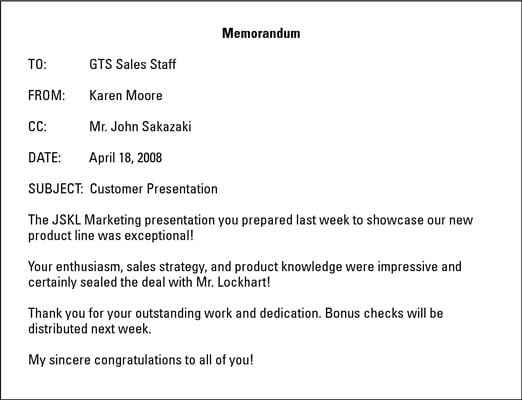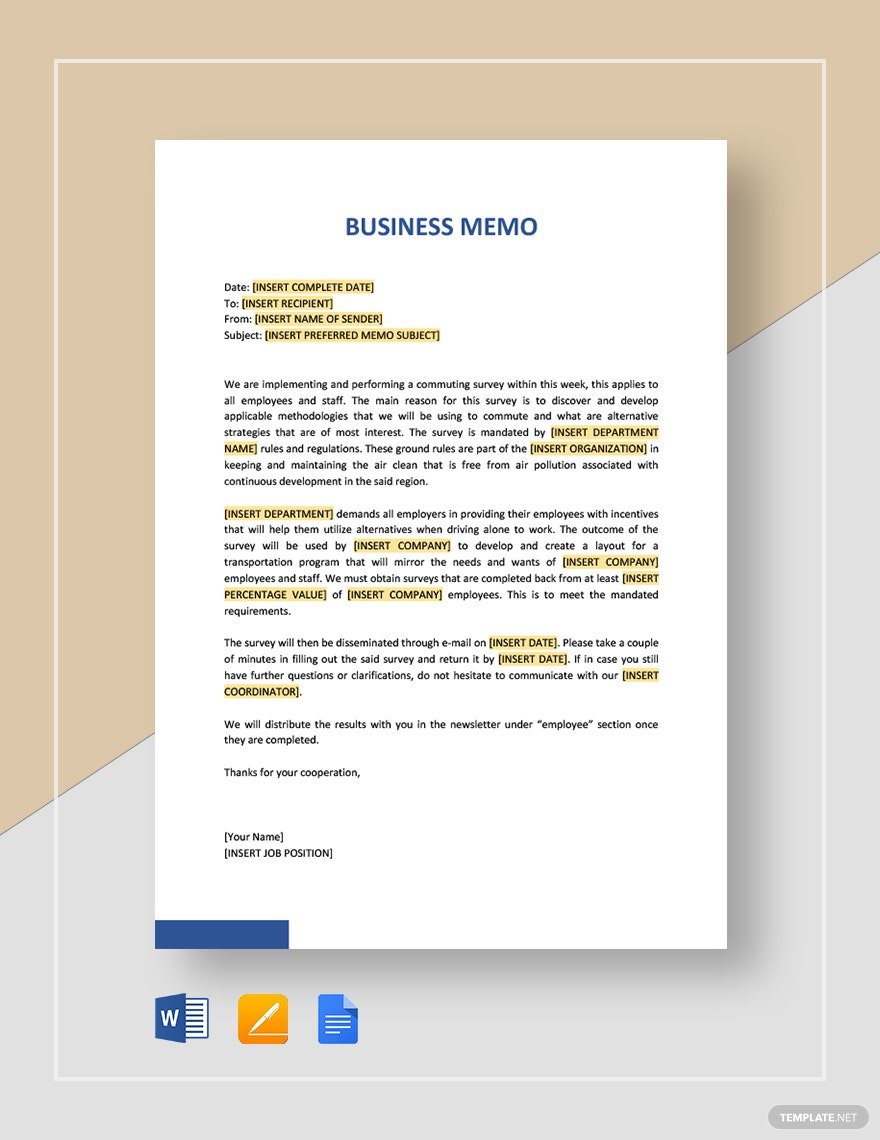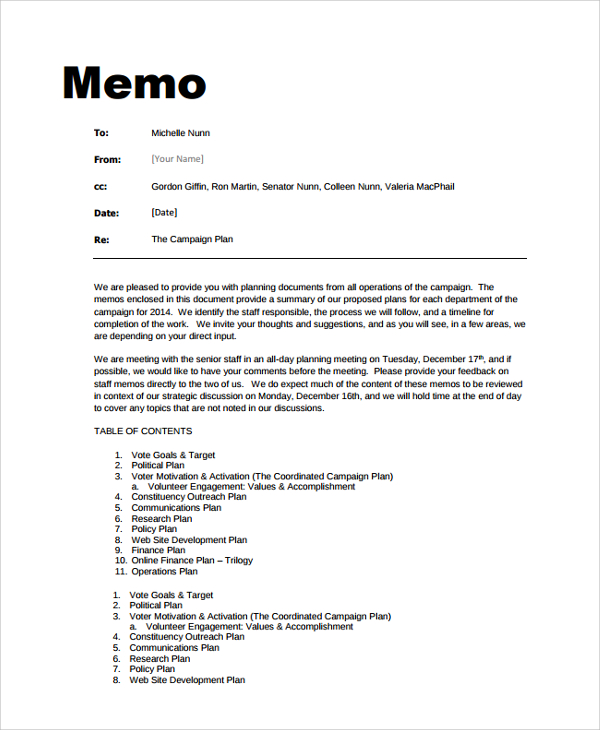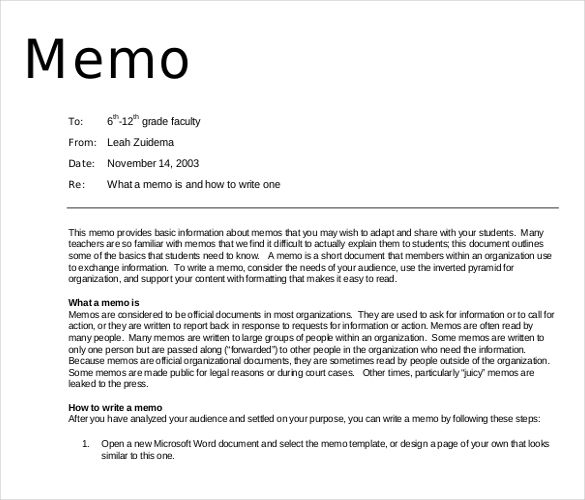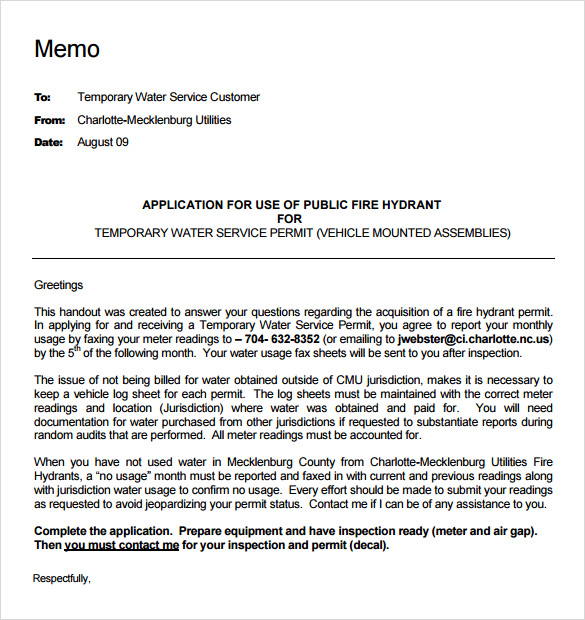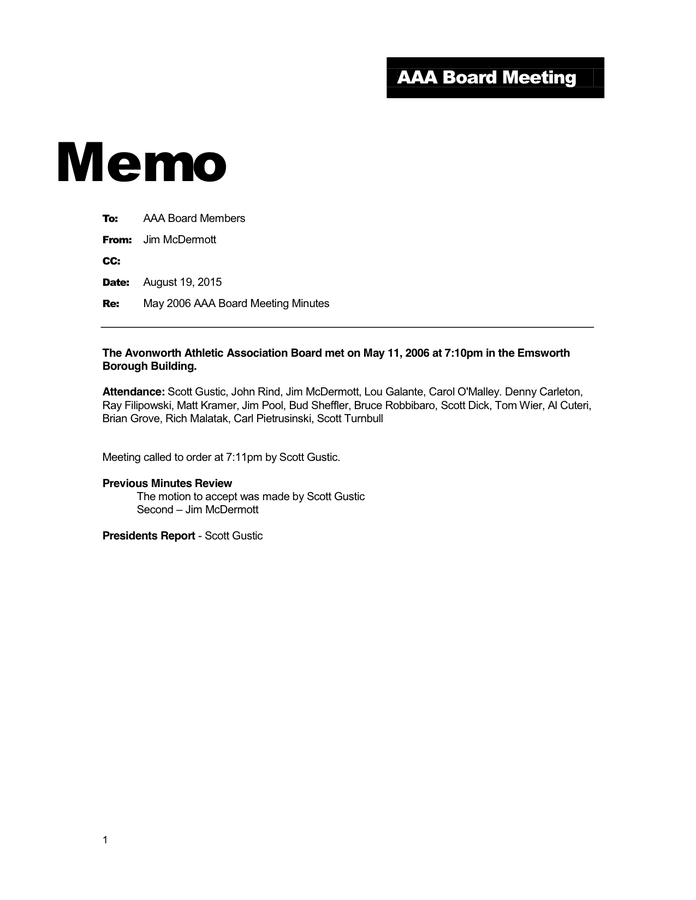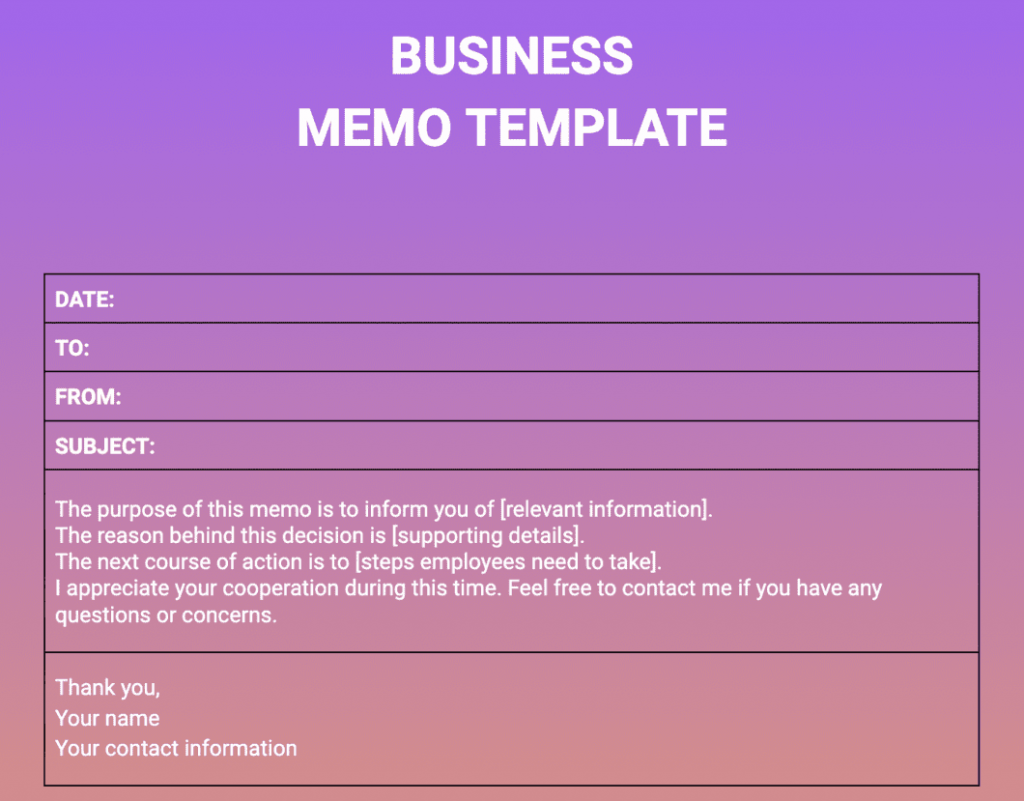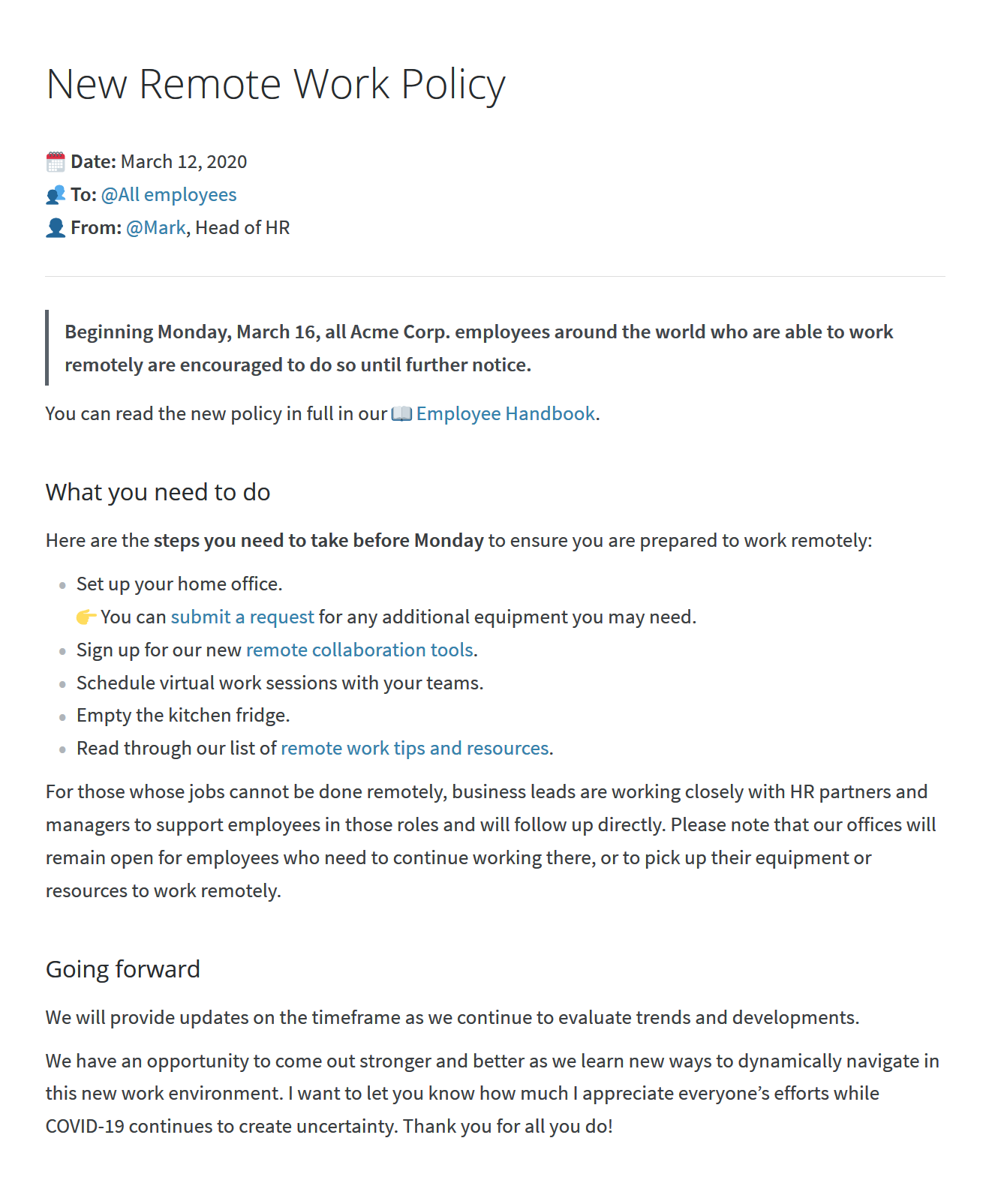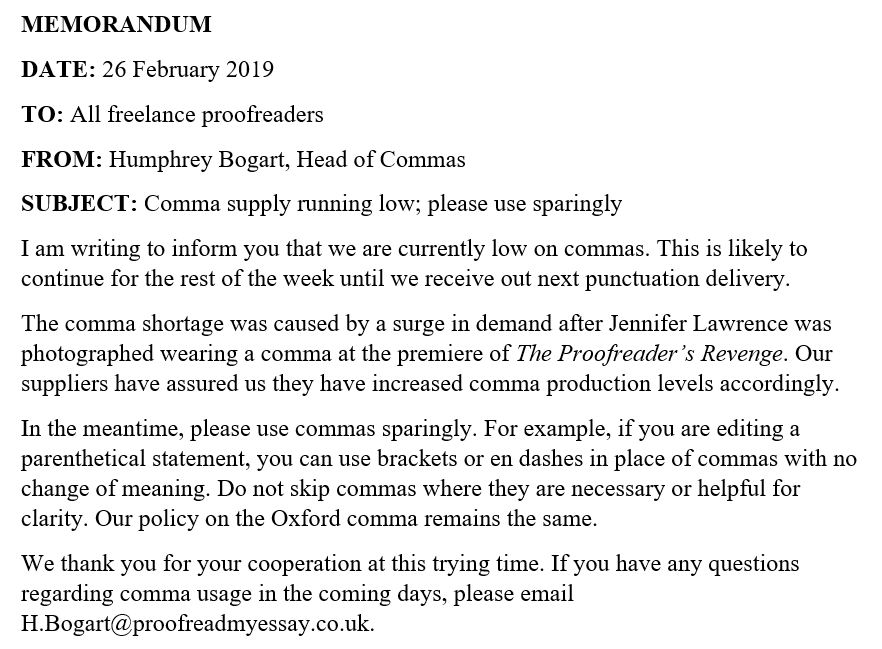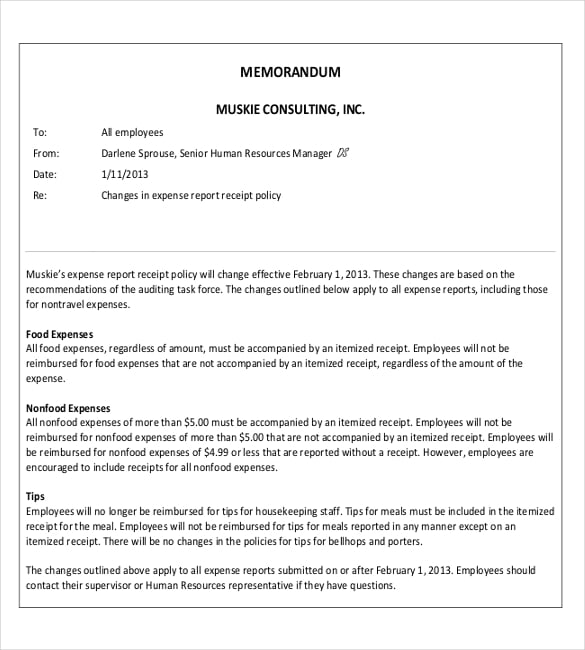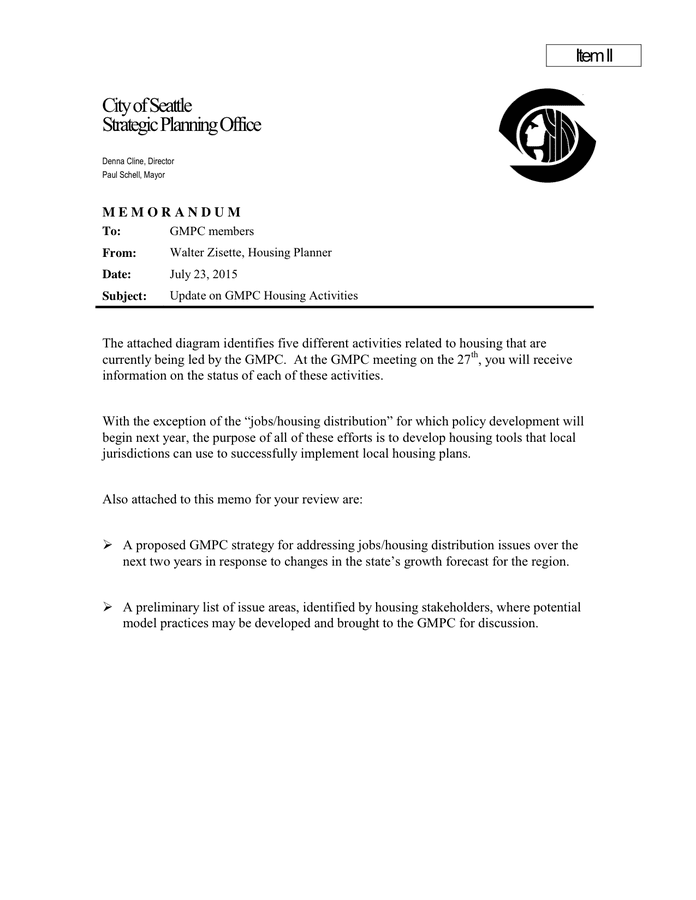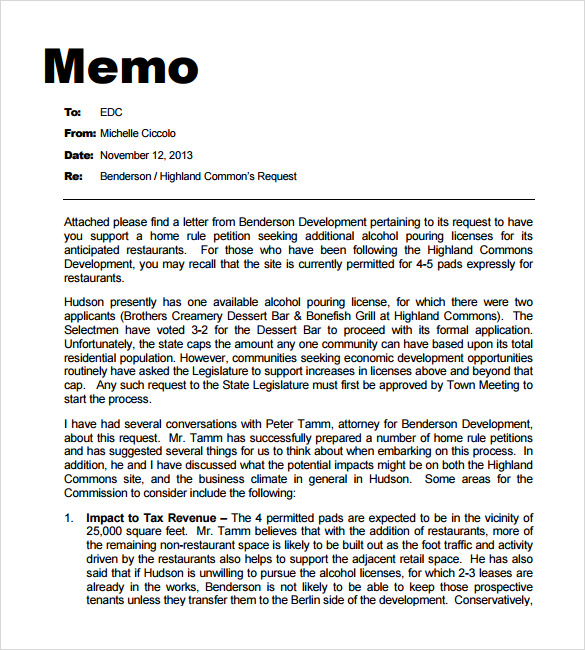What Does A Business Memo Look Like
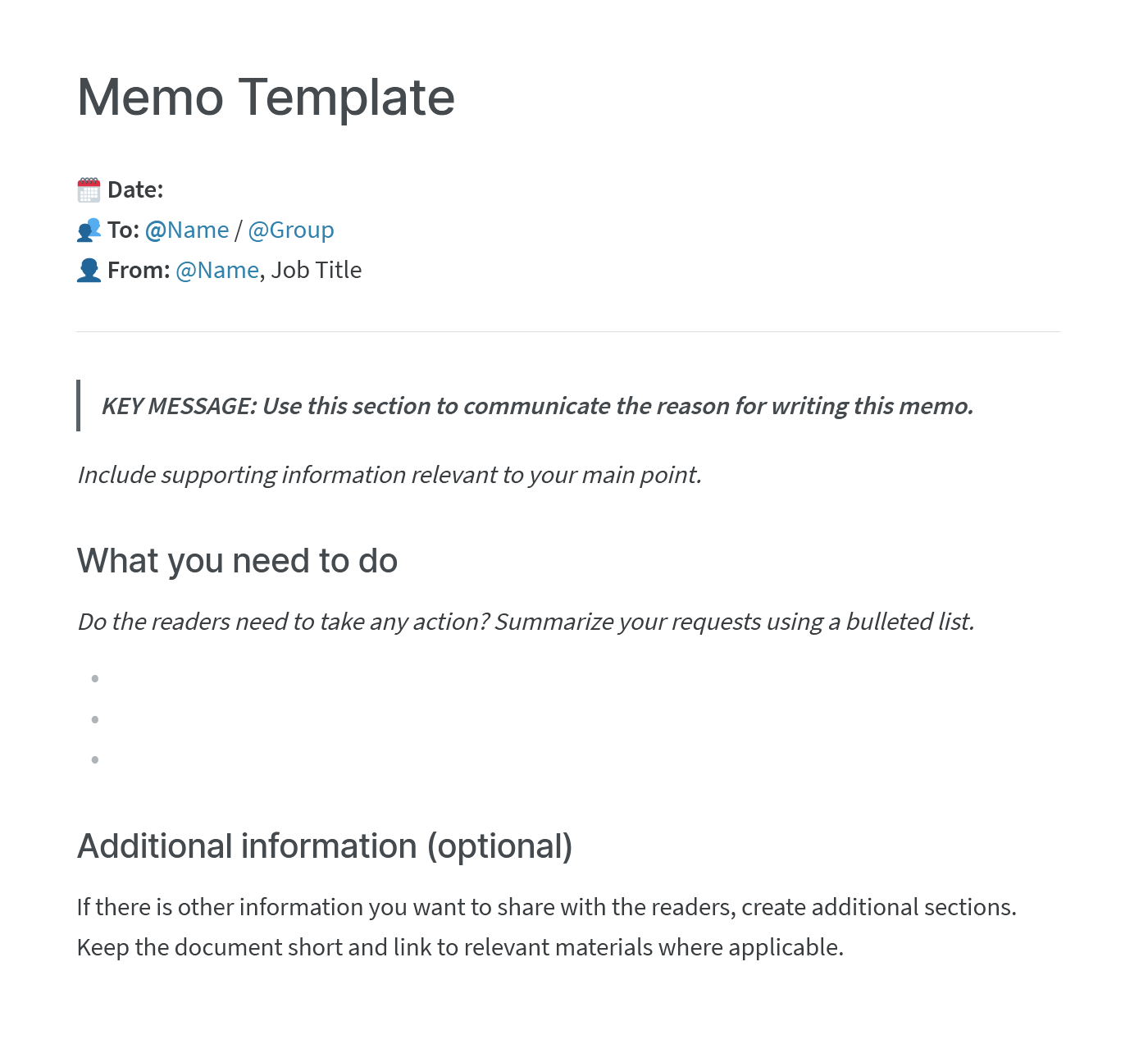
In the fast-paced world of commerce, clear and concise communication is paramount. One staple of internal business communication, the business memo, often gets overlooked, yet its effectiveness can significantly impact organizational efficiency and workflow.
A poorly structured memo can lead to confusion, wasted time, and even costly errors. Understanding the anatomy of a well-crafted memo is, therefore, crucial for professionals across all industries.
The Anatomy of an Effective Business Memo
At its core, a business memo is a brief document used to communicate information within an organization. It serves as a record of communication and ensures that key messages are disseminated clearly and consistently.
A well-structured memo typically includes several key components: a heading, an introduction, a body, and a conclusion. Each element plays a critical role in conveying the intended message effectively.
The Heading: Setting the Stage
The heading of a memo is arguably the most critical element, as it instantly identifies the purpose and context of the document. The heading usually includes four key pieces of information: "To," "From," "Date," and "Subject."
The "To" line specifies the recipient(s) of the memo, which can be an individual, a department, or even the entire company. The "From" line identifies the sender, ensuring accountability and clarity.
The "Date" line indicates when the memo was written, providing a timestamp for record-keeping purposes. Finally, the "Subject" line is a concise and descriptive summary of the memo's main topic, allowing recipients to quickly understand the memo's purpose.
The Introduction: Hooking the Reader
The introduction of a business memo should be concise and directly state the memo's purpose. It should clearly outline the reason for writing the memo and what the reader should expect to find within the document.
Avoid beating around the bush; get straight to the point. A clear and focused introduction grabs the reader's attention and sets the stage for the rest of the memo.
The Body: Conveying the Message
The body of the memo is where the main message is presented in detail. This section should be well-organized, using clear and concise language to convey information effectively.
Break down complex information into smaller, more manageable paragraphs. Use bullet points, numbered lists, or headings to improve readability and highlight key information. Avoid jargon or technical terms that the reader may not understand.
Back up your statements with facts, figures, and supporting evidence whenever possible. This adds credibility to your message and ensures that the reader understands the basis for your conclusions or recommendations.
The Conclusion: Summarizing and Action Items
The conclusion of a business memo should summarize the main points of the document and outline any necessary action items. This section should reiterate the purpose of the memo and reinforce the key takeaways.
Clearly state what the reader is expected to do after reading the memo. Provide deadlines, contact information, and any other relevant details to facilitate action.
End with a professional closing, such as "Sincerely" or "Best regards," followed by your name and title.
Key Considerations for Effective Memos
Beyond the basic structure, several other factors contribute to the effectiveness of a business memo. These include tone, audience, and overall clarity.
The tone of a memo should be professional and respectful, regardless of the message being conveyed. Avoid using overly emotional language or making personal attacks. Remember, memos are official documents that can be used for reference in the future.
Consider your audience when writing a memo. Tailor your language and level of detail to the reader's understanding and background. A memo written for senior executives will likely be different than one written for entry-level employees.
Strive for clarity in all aspects of your memo. Use simple, direct language and avoid ambiguity. Proofread your memo carefully for errors in grammar and spelling before sending it.
According to a study by the Project Management Institute, poor communication is a leading cause of project failure. Therefore, investing time in crafting clear and effective memos can significantly improve organizational performance.
The Future of Business Memos
While email and instant messaging have become increasingly prevalent in the workplace, business memos remain a valuable tool for internal communication. They provide a formal and documented record of important decisions, policies, and procedures.
As technology continues to evolve, the format of business memos may change. However, the fundamental principles of clear, concise, and effective communication will remain essential.
By mastering the art of writing effective business memos, professionals can improve their communication skills, enhance organizational efficiency, and contribute to a more productive and collaborative work environment. The key is to remember the core principles: clarity, conciseness, and a focus on the reader's needs.
